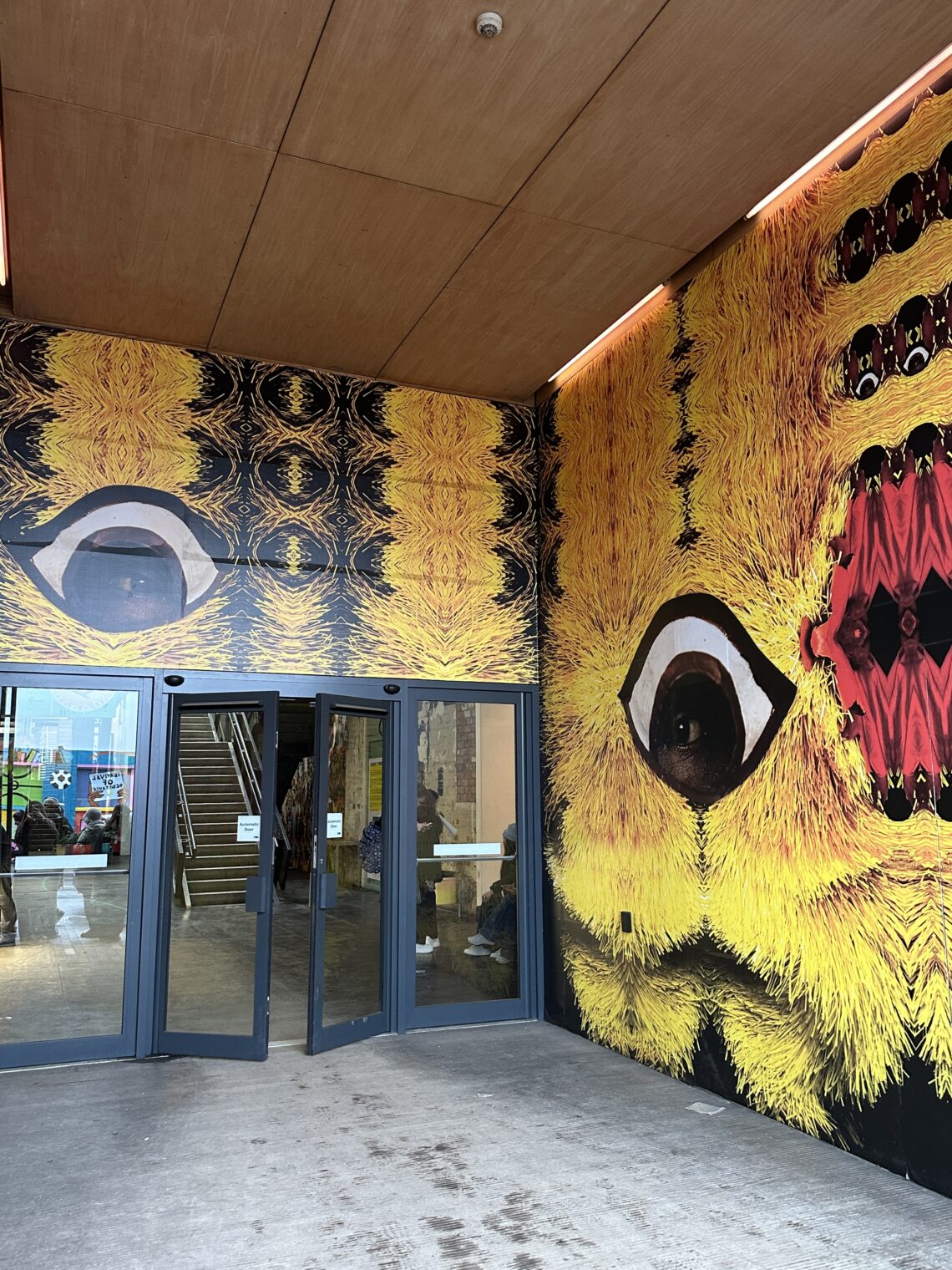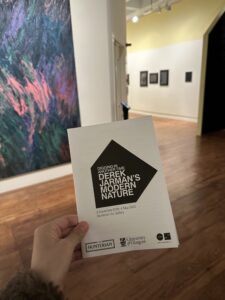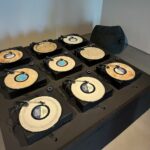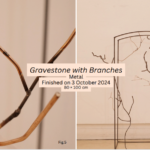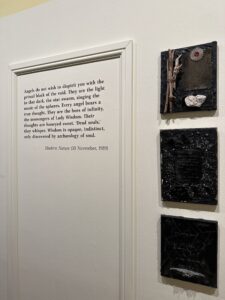
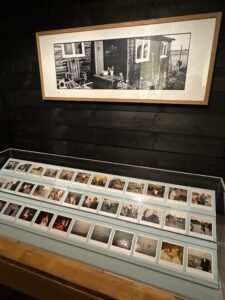
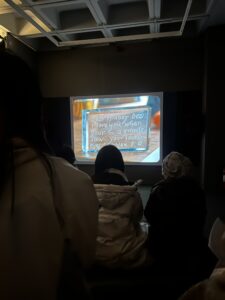
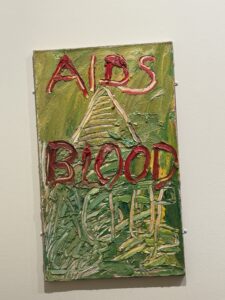
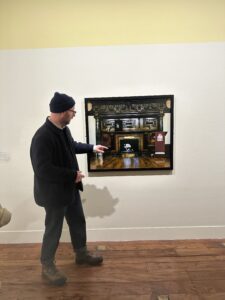
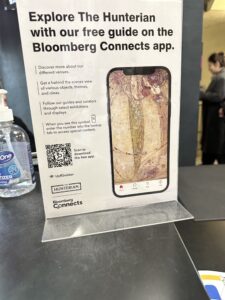
(The above photos were taken by the author on-site. They are field investigation photos.)
Exploring Curatorial Narratives in Glasgow
This week, I had the opportunity to participate in a field trip to The Hunterian Museum and Art Gallery, Tramway, and Glasgow’s Gallery of Modern Art (GOMA). This experience deepened my understanding of curatorial storytelling, spatial design, and audience engagement, which are highly relevant to my ongoing exhibition project on the chromatic representations of death.
The Hunterian: Contextualizing the Past
The visit to The Hunterian Museum offered insights into how historical artifacts are framed within a contemporary curatorial lens. One of the highlights was the Derek Jarman’s Modern Nature exhibition, where Jarman’s engagement with landscapes, illness, and memory resonated with my research on mortality and symbolism. His artistic approach, particularly his use of color and texture, provided a compelling perspective on how artists materialize personal and collective grief.
I was particularly struck by the textured, almost visceral nature of Jarman’s works, which reminded me of how color can evoke both decay and vitality. His use of green and red in AIDS-related paintings, for instance, carried deep symbolic meanings—green as a sign of hope and red as a marker of struggle and remembrance.
Tramway: Engaging with Contemporary Art & Feminist Curating
At Tramway, we attended a talk by Claire Jackson, which focused on the role of feminist and queer curating. This discussion highlighted how contemporary curatorial practices can serve as acts of resistance and re-interpretation. A key takeaway was how curation itself can be a form of activism, providing a space to challenge dominant narratives.
The exhibition I encountered at Tramway emphasized the interdisciplinary nature of modern curating, blending video, sound, and sculpture to create immersive environments. This multi-sensory approach made me reconsider how I can integrate light, sound, and interactivity into my own exhibition design.
GOMA: Institutional Framing of Social Narratives
Visiting Glasgow’s Gallery of Modern Art (GOMA) offered yet another perspective on how institutions frame social, political, and historical themes. The exhibition on colonial collections and their impact made me reflect on how museums curate sensitive or difficult histories. The way labels, lighting, and spatial design were employed helped guide the audience’s engagement with the artifacts.
This visit made me think about the responsibility of curators in shaping public memory, particularly when dealing with themes of loss, legacy, and historical trauma—concepts that are also central to my exhibition on death and color.
Reflections & Next Steps
This field trip reinforced the importance of context and spatial storytelling in curating exhibitions. Moving forward, I plan to:
• Refine the sensory aspects of my exhibition, taking inspiration from Tramway’s immersive curatorial strategies.
• Incorporate Jarman’s approach to color symbolism into my selection of works, especially regarding the tension between decay and transformation.
• Consider the ethical dimensions of curation, ensuring that my exhibition addresses sensitive topics with thoughtfulness and depth.
Conclusion
Experiencing different curatorial strategies firsthand has provided valuable insights for my own project. Seeing how institutions balance history, aesthetics, and audience engagement has encouraged me to experiment further with interactive elements, material choices, and narrative structures in my own curatorial work.
This visit has solidified my belief that curating is not just about arranging objects in a space—it’s about telling stories, evoking emotions, and creating meaningful dialogues between the past and present.
